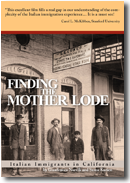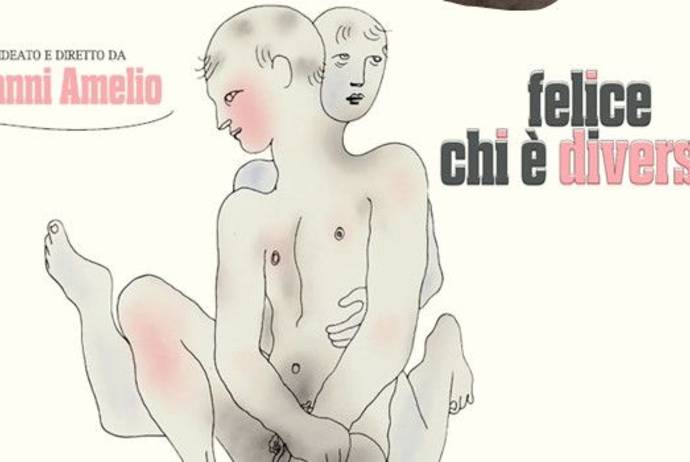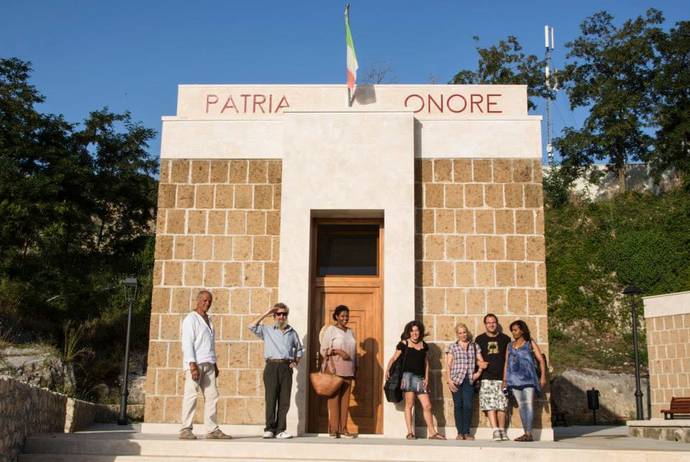When Tom Ammiano fled New Jersey to settle in San Francisco some fifty years ago, he hardly imagined that one day he'd become one of his adopted state's most prominent politicians.
In the early 1960s, Ammiano was an unhappy, closeted young gay man who felt that he was "suffocating," and he craved the freedom he believed existed in California. "I moved to San Francisco to be gay," says. "My big thing was to escape. I just wanted to go, to get the hell out of Jersey so I could be myself.”
A half-century later, Ammiano, now 73, looks back on a remarkable career as a grassroots activist, local elective officeholder, and member of the California State Assembly. At the end of 2014, Ammiano left the Assembly (due to term limits) after having served three terms representing his district, which comprises most of the consolidated city-county of San Francisco.
During his time in the Assembly, Ammiano, a left wing Democrat, was an uncommonly effective legislator. In one year alone, – 2013 – Governor Jerry Brown singed thirteen bills sponsored by Ammiano, including his Trust Act, which offers undocumented immigrants greater protection from deportation.
Ammiano hardly coasted during his last year as an Assembly member. As the Los Angeles Times observed, "his legislative agenda for his final year in the Assembly is full of issues that many Democrats wouldn't dare touch, like reclassifying certain sex offenders and changing how commercial properties are taxed under Proposition 13."
As the Chair of the Assembly Public Safety Committee, he fought to reform California's corrections system and criminal sentencing. His other assignments included the health, human services, and transportation committees, and the Joint Committee on the Arts. He also was a member of the legislature's LGBT and environmental caucuses.
During an interview in late 2014, shortly before he left office, I remarked to Ammiano that his success at advancing progressive and even radical political positions as an elected official led me to think of him as "the gay Vito Marcantonio." Like the East Harlem attorney and tenants' rights activist turned US Congress member, Ammiano comes from a working class, Southern Italian immigrant family. He also had years of experience as an activist before he entered electoral politics. And like Marcantonio, he is a leftist maverick who has put dedication to principle above party loyalty, often challenging his party's leadership and the political establishment.
Ammiano admitted he was unaware of Marcantonio until a friend gave him a biography of the Congressman, remarking, "This guy puts me in mind of you."
"I didn't know about him," Ammiano said. But after reading the biography, he said saw the parallels with Marcantonio, who represented his East Harlem district in Congress over several terms, from 1935 to 1951.
Ammiano, however, had one tool in his skill set that Marcantonio didn't: standup comedy. He began to perform professionally in 1980, when he established a gay comedy night at San Francisco's Valencia Rose Cabaret. The self-described "mother of gay comedy" (he has never shied from camp humor, which in some gay circles is now considered passe') performed nationally. I saw him in New York in 1990, and during our interview I recounted one of the joes from that show: "I'm firty-nine." Pause. "That's ninety-four in gay years." The now-septuagenarian Ammiano laughed, and then sighed, "Forty-nine..."
He says his comedy experience has served him well in his political career, from his days as an activist schoolteacher to his years in the Assembly. "I use humor a lot, and I think that helped me in Sacramento." In 1993, when a conservative member of the San Francisco School Board said, "Surely, Mr. Ammiano, you don't endorse condom availability in the schools?", Ammiano replied, "Not only do I endorse, I am wearing one right now. And here's one for you -- a lifetime supply."
In 1999, Ammiano was at the center of a controversy involving the Catholic archdiocese and the Sisters of Perpetual Indulgence, a street theater cum activist group whose members dress in drag as Catholic nuns. The Board of Supervisors, at Ammiano's request, granted the Sisters a permit to close a block of Castro Street for their anniversary celebration – which just happened to fall on Easter weekend. San Francisco's archdiocese demanded that the event be moved to another day; the archdiocesan newspaper compared the Sisters' event to neo-Nazis celebrating on Passover. The Knights of Columbus took out a full-page newspaper advertisement denouncing Ammiano for his support of the Sisters.
When one Supervisor criticized Ammiano and the Sisters as anti-Catholic, he suggested she refrain from such rhetoric until "you've walked a mile in my pumps."
That was "classic Tom," remarked Tommi Avicolli Mecca, like Ammiano a gay Italian American from New Jersey who relocated to San Francisco, where he has become a prominent LGBT and housing rights activist.
The controversy evidently helped make the Sisters' anniversary party a resounding success; 5,000 attended and the event raised thousands of dollars for local AIDS and LGBT charities.
The Personal and the Political
Tom Ammiano says he came to leftwing politics through personal experience. His impoverished immigrant grandparents were from small towns outside Naples. "They did not romanticize Italy," he recalls. "In fact, they hated it. They were dirt-poor and illiterate."
"They left," he says, "because they felt there was nothing there for them."
His American-born parents were poor, and he remembers them "scrambling to pay the rent every month." When they no longer could afford to pay the rent on their Newark apartment, they moved the family, Tom and his two older siblings, to Tom's grandfather's house in Montclair.
His parents both suffered ill health. His father, a taxi driver, put off seeing a doctor for his hypertension because he had no health coverage. He suffered a major stroke and died when Ammiano was in college.
"I knew about class issues without having gone to a Marxist study group," he says.
Ammiano, with his fey mannerisms and voice, was unable to pass for straight, and he says he was bullied and beaten up "a lot" when he was in high school. Although he jokes that he was gay "in utero," he didn't come out officially until 1975, when he co-founded a gay teachers group to confront homophobia in San Francisco schools. This made him the city's first openly gay teacher, during a time when right-wing efforts against gay and lesbian educators were gathering force. (Those efforts culminated in the 1978 Briggs ballot initiative, which would have amended California's constitution to bar gay men and lesbians from teaching in public schools. Ammiano, activist Hank Wilson, and San Francisco's openly gay political leader Harvey Milk led a campaign against the initiative, major political figures opposed it, and voters overwhelmingly defeated the initiative at the polls.)
Ammiano's mother did not react well to his very public coming out. "My mother just blew her lid," he recalls. "She said, 'what did I do wrong?' It’s always about them, you know."
After he came out, his parents wondered why he had to do it. "My mother’s big thing was not wanting other people to know – what would they think! That comes from Italian village life, I think."
But, when he introduced his partner, Tim Curbo, to his family, they accepted him. "He was OK, I guess. He was handsome and didn't seem gay to them." Ammiano and Curbo were together for sixteen years, until Curbo died from AIDS in 1994.
Once Ammiano leaped into political activism, there was no looking back. Voters elected him to the San Francisco School Board in 1990, and he became its president before leaving in 1994, when he won citywide election to the Board of Supervisors. He remained a member of the Board until his 2008 election to the California Assembly. As a Supervisor, he spearheaded the San Francisco Health Care Security Ordinance, which made the city the nation's first to provide universal healthcare access. He also was the main architect of San Francisco's Domestic Partners Ordinance, which provided equal benefits to municipal employees and their domestic partners.
In 1999, Ammiano mounted a successful write-in campaign in the San Francisco mayoral contest, preventing the incumbent Willie Brown from achieving a victory without a run-off. Ammiano lost the December runoff election, but his campaign galvanized left-leaning voters. The Los Angeles Times reported that one of Brown's aides acknowledged that the mayor "was nudged leftward by Ammiano, who used his perch on the Board of Supervisors to loudly contest Brown’s pro-development bent." Ammiano ran for mayor again in 2003, but failed to make the run-off when Matt Gonzalez, a city Supervisor, entered the race and split the progressive vote.
Throughout his political career, his priorities have included workers' rights, the homeless, immigrants, youth, and the LGBT community.
As an activist, leftwing Democrat, he often has criticized his party’s timidity and conservatism. Now that he has left office, some of his supporters, including Tommi Avicolli Mecca, are urging him to run again for mayor of San Francisco. There currently is no organized effort behind a potential Ammiano candidacy. But activists like Avicolli Mecca see Ammiano as a forceful and effective advocate who will oppose the neoliberal economic development and housing policies that have made the city increasingly unaffordable to all but the rich.
Ammiano says that he's not ready to retire from public life, and that he indeed is considering running for another office. In fact, he has opened a 2016 campaign finance account for a possible California State Senate run. He also hasn't ruled out running for San Francisco mayor against incumbent Ed Lee.
He does not intend to give up performing, either; he says he is working on a new one-man show.
In the meantime, Ammiano enjoys life with his partner, Carolis Deal, whom he married in 2014, and with his daughter Annie, her husband, and their three children. He says that Annie – who was conceived by a friend via artificial insemination – resembles him. "She loves being half-Italian," he says.
Ammiano says that in San Francisco he has "tried to mirror what the family structure was in New Jersey, but on my terms – by creating alternative family with other gay people." That experience, he says, was "transformative" and enabled him to grow. And he now feels that "the Italian milieu, despite its flaws and perversities, also offered support.”
"I had to get away from my family," he says. "But the family really did give me something – a sense of self-worth."







































